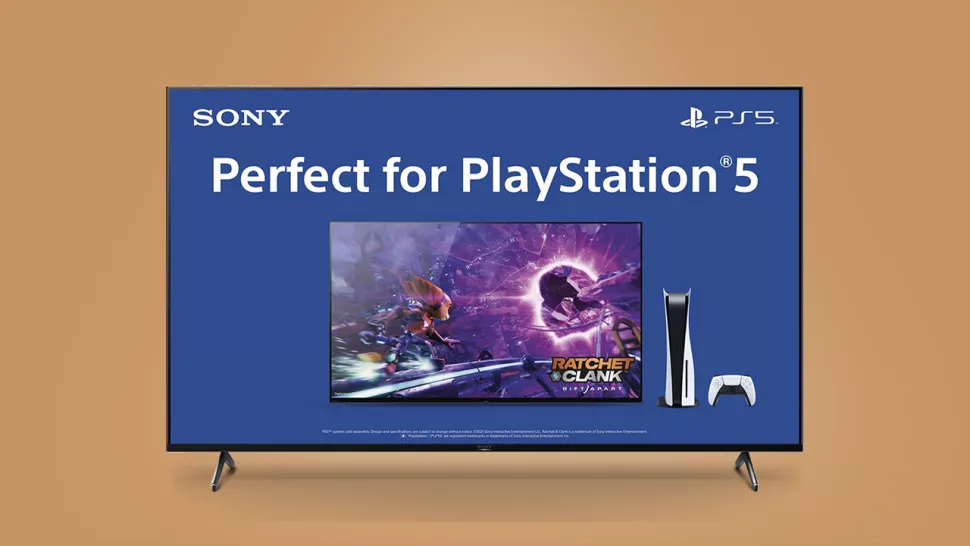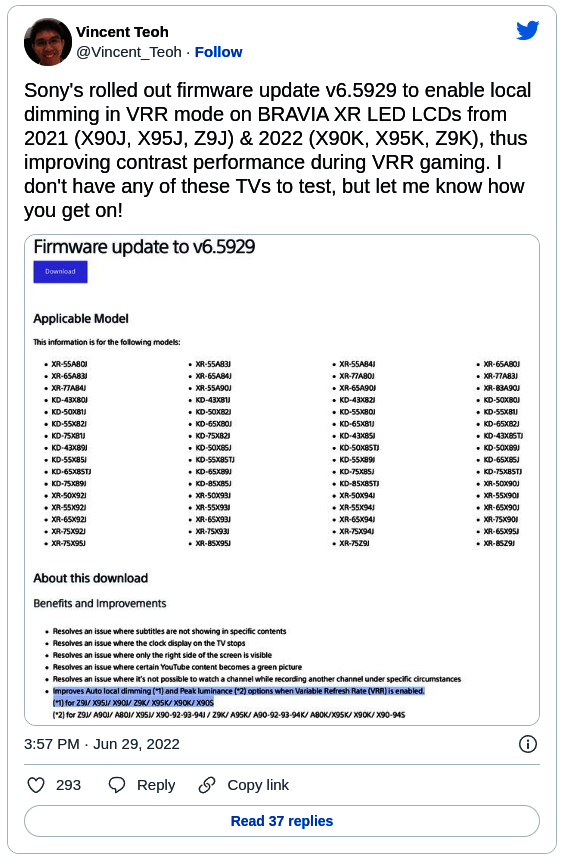Sony has released an important update for its 2021 and 2022 “Perfect for PlayStation 5” LED TVs, enabling variable refresh rate and full video quality at the same time.

Previously, Sony’s TVs suffered from a problem when activating VRR that’s related to the XR Cognitive Processor. When VRR is activated, it has the nasty side effect of automatically disabling the local dimming feature in the LED backlight, meaning that the TV’s HDR contrast is affected. As a result, gamers were subject to inferior graphics when using VRR.
Sony’s latest firmware upgrade thankfully fixes this problem, allowing VRR and local dimming to work side-by-side with one another. The issue affected various Sony TVs, including its 2021 X90J, X95J and Z9J 8K models, plus the new X90K, X95K and Z9K models launched this year.
The v6.5929 update was first spotted by HDTVTest reviewer Vincent Teoh, who tweeted that it is being rolled out now, providing an immediate improvement in contrast performance during VRR gaming. It may be that Sony is taking its time with the rollout though, so those who haven’t seen it yet should check in the settings to see if it can be downloaded manually.

Sony OLED TV owners won’t need to worry about this as their TVs use a very different local dimming technology that isn’t affected by VRR. It also won’t affect anyone who owns one of Sony’s mid-range TVs, such as the Sony X85J or X85K, as these models use a different chipset.
It’s good to see that Sony has come up with a fix to what was surely a very annoying issue for PS5 and Xbox Series X gamers. While Sony has gone to great lengths to advertise its TVs as the best choice for gamers, the reality has been somewhat different as many of its next-generation gaming features have arrived late, and the updates haven’t always gone smoothly.
For instance, Sony took an especially long time to roll out VRR, which allows game’s framerates to shift up and down without causing screen tearing. When it did finally enable the feature, it only led to additional hassles for some users with the disabled local dimming controls. To have your expensive new TVs HDR capability hobbled by the introduction of another fancy new feature must have been a big frustration.
Sony has also been criticised for its poor communication with customers over the steps it was taking to resolve the issue, simply declining to say if it would introduce a VRR fix. The good news is that it has finally done so. That’s in contrast to the more reassuring approach of LG Electronics, for example, which generally always says it’s aware of issues and trying to resolve them, even if it can’t provide any specific details.